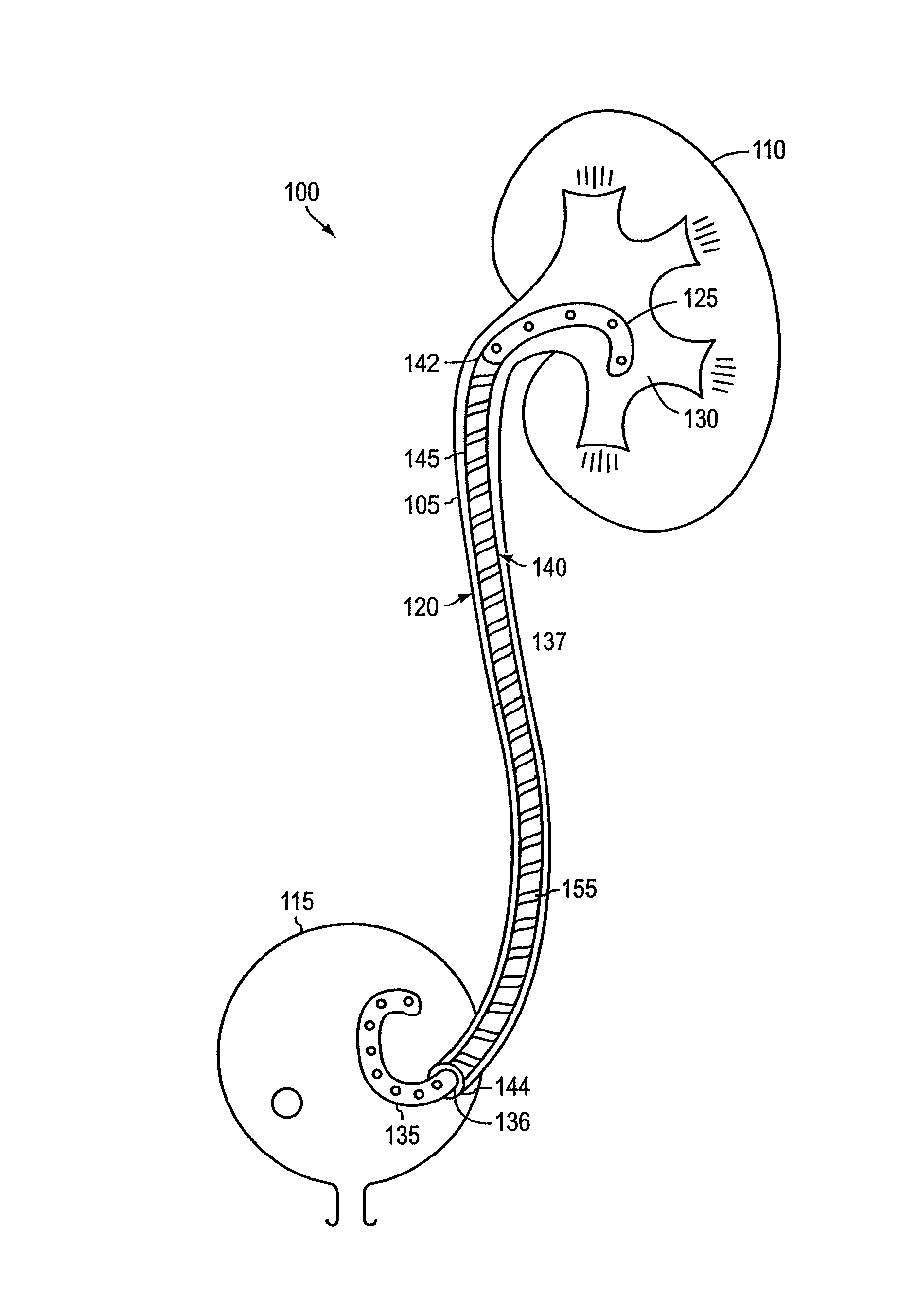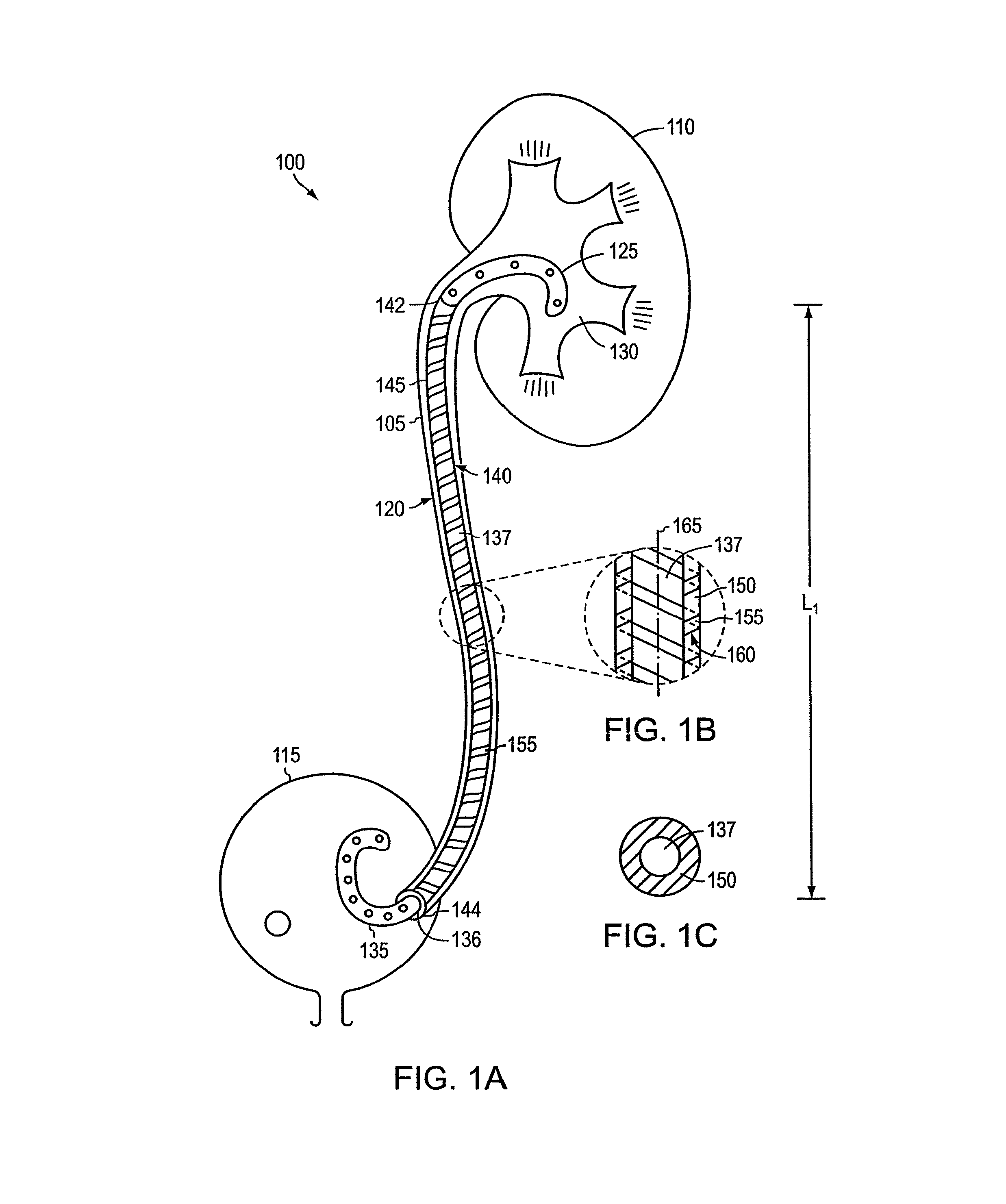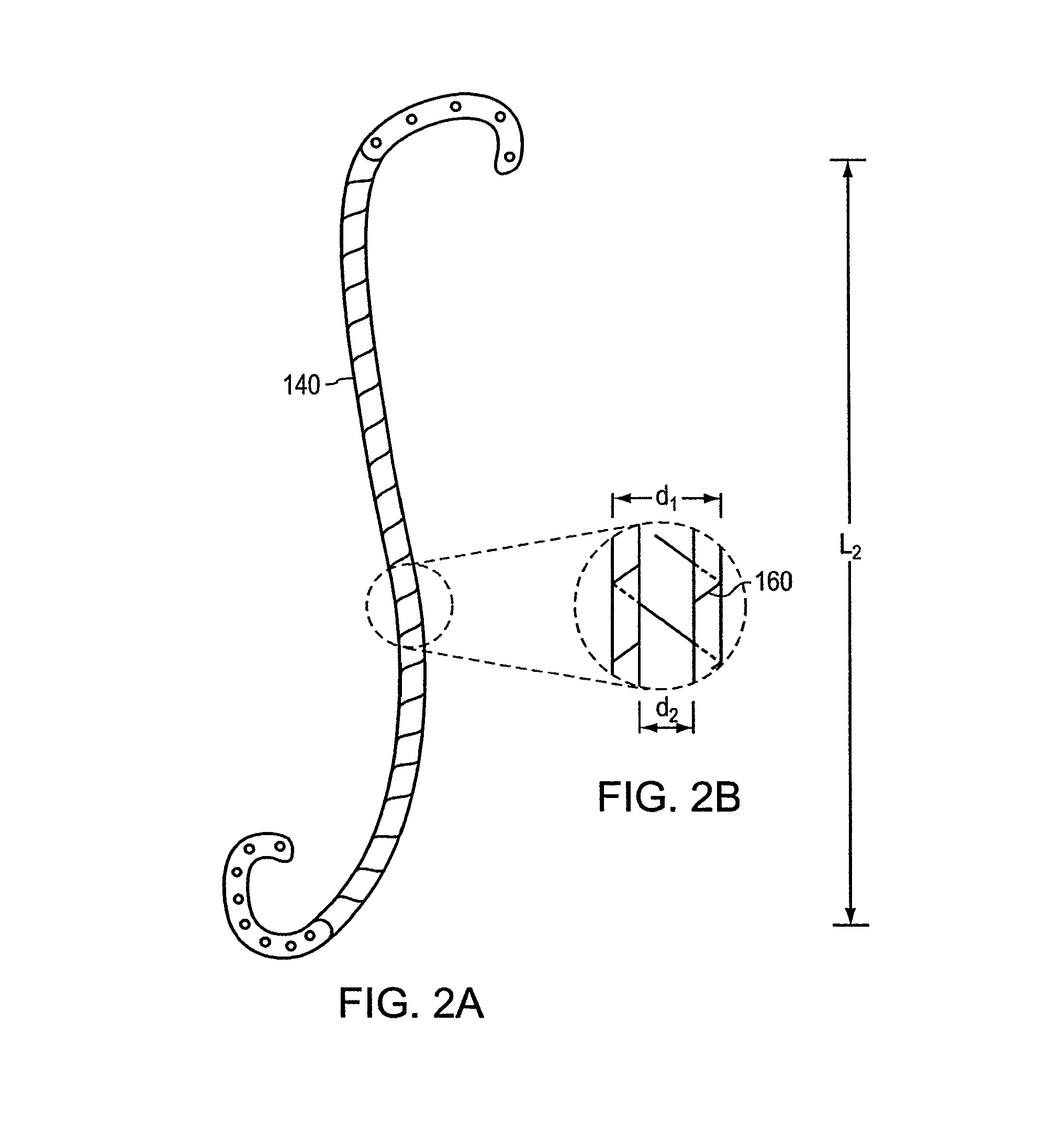Method of disposing a linearly expandable ureteral stent within a patient
a ureteral stent and linear expansion technology, applied in the field of ureteral stents, can solve the problems of threatening renal function, pain from trigome irritation, discomfort of stents, etc., and achieve the effects of facilitating fluid drainage, minimizing pain and discomfort, and maintaining the patency of the ureter
- Summary
- Abstract
- Description
- Claims
- Application Information
AI Technical Summary
Benefits of technology
Problems solved by technology
Method used
Image
Examples
Embodiment Construction
[0028]The invention features temporary ureteral stents that, when positioned within the ureter of a patient, significantly reduce discomfort to the patient. As used herein, proximal refers to the end of a stent closest to a medical professional when placing a stent in a patient. As used herein, distal refers to the end of a stent furthest from a medical professional when placing a stent in a patient.
[0029]Referring to FIG. 1A, a human urinary tract 100 includes a ureter 105 that transports urine from a kidney 110 to a bladder 115. When ureter 105 becomes blocked or obstructed due to, for example, post-kidney stone fragmentation / removal and ureteral stricture therapy, fluid drainage can become restricted. Ureteral stents are medical devices that are implanted within ureter 105 to restore patency and fluid drainage. A ureteral stent 120 is located within the ureter 105 of a patient, with a distal retention structure 125 in a pelvis 130 of kidney 110, and a proximal retention structure...
PUM
 Login to View More
Login to View More Abstract
Description
Claims
Application Information
 Login to View More
Login to View More - R&D
- Intellectual Property
- Life Sciences
- Materials
- Tech Scout
- Unparalleled Data Quality
- Higher Quality Content
- 60% Fewer Hallucinations
Browse by: Latest US Patents, China's latest patents, Technical Efficacy Thesaurus, Application Domain, Technology Topic, Popular Technical Reports.
© 2025 PatSnap. All rights reserved.Legal|Privacy policy|Modern Slavery Act Transparency Statement|Sitemap|About US| Contact US: help@patsnap.com



